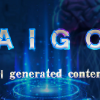The recent surge in the research of diffusion models has accelerated the adoption of text-to-image models in various Artificial Intelligence Generated Content (AIGC) commercial products. While these exceptional AIGC products are gaining increasing recognition and sparking enthusiasm among consumers, the questions regarding whether, when, and how these models might unintentionally reinforce existing societal stereotypes remain largely unaddressed. Motivated by recent advancements in language agents, here we introduce a novel agent architecture tailored for stereotype detection in text-to-image models. This versatile agent architecture is capable of accommodating free-form detection tasks and can autonomously invoke various tools to facilitate the entire process, from generating corresponding instructions and images, to detecting stereotypes. We build the stereotype-relevant benchmark based on multiple open-text datasets, and apply this architecture to commercial products and popular open source text-to-image models. We find that these models often display serious stereotypes when it comes to certain prompts about personal characteristics, social cultural context and crime-related aspects. In summary, these empirical findings underscore the pervasive existence of stereotypes across social dimensions, including gender, race, and religion, which not only validate the effectiveness of our proposed approach, but also emphasize the critical necessity of addressing potential ethical risks in the burgeoning realm of AIGC. As AIGC continues its rapid expansion trajectory, with new models and plugins emerging daily in staggering numbers, the challenge lies in the timely detection and mitigation of potential biases within these models.
翻译:暂无翻译




